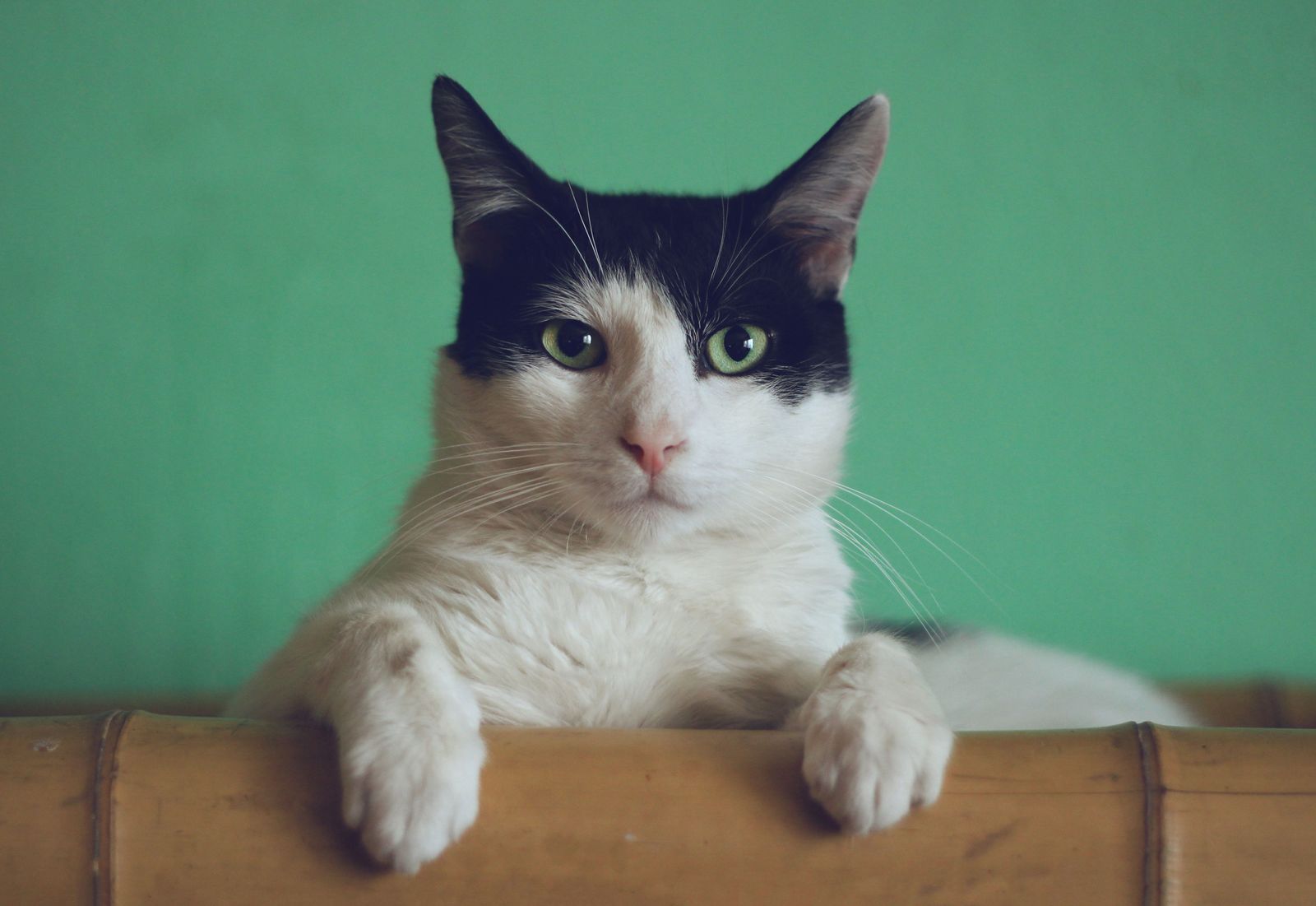How do house cats get diseases when they live indoors?

When it comes to illness and injury, house cats live a low-risk lifestyle - but they still get sick and they still need preventive care. Even though indoor kitties aren’t out fighting or being exposed to lots of unfamiliar cats, they are still exposed to a variety of parasites and infectious diseases from the comfort of home. Vaccines and parasite control go a long way towards offering protection against the more common infectious diseases indoor cats are exposed to, but when you consider that many diseases occur without any type of infection or exposure, it’s no wonder that house cats still end up developing a variety of illnesses over the course of their lives.
How indoor cats come into contact with diseases
When it comes to infectious diseases, indoor cats are much safer than their outdoor peers, but they are still at risk for their fair share of infectious diseases. Walls, windows, and doors do a good job minimizing a cat’s exposure to disease-causing pathogens, but they’re not foolproof. Some parasites and infectious agents (bacteria, viruses, and fungi) are easily transmitted through screened doors and windows, and they’re also happy to hop a ride on our shoes and clothing. Pests like insects and rodents still manage to make their way indoors and expose indoor kitties when they hunt them down.
The bottom line is that while an indoor lifestyle is low-risk, it’s not no-risk. Since indoor cats are still at just as much (and sometimes more) risk as their outdoor peers for a variety of non-infectious illnesses, it is best to take what steps you can to avoid preventable illnesses. Keeping your indoor cat up-to-date on vaccinations and parasite control provides this measure of protection. It also helps keep people in the household safer and simplifies risk management whenever you want to bring home a new pet.
Most diseases are not the result of coming into contact with some kind of infectious or contagious agent. Genetics and lifestyle play a big role in the origin of many illnesses, as do environmental factors. Variations in immune system function are another big contributor, and in many cases the cause of a particular illness cannot be identified. Since staying indoors does not protect cats from non-infectious diseases, pet parents of indoor cats need to be aware of:
- The best preventive health care strategies for their feline companions
- The types of illnesses commonly seen in indoor kitties
The top four diseases that affect indoor cats
The primary diseases that affect indoor cats are not brought on by contagions but by a combination of genetics, environment, and lifestyle. Here are the top four diseases that an indoor cat is likely to contract:
1 - Periodontal disease
Periodontal and dental diseases are very common in indoor cats. These conditions are not contagious, so staying inside doesn’t decrease the risk. Scientific evidence suggests house cats are more likely to develop periodontal disease than their outdoor peers who hunt for a living. Most cats develop some degree of dental disease as they age, and severe periodontal disease, if left untreated, decreases a cat’s life expectancy by years.
Early symptoms of periodontal disease, like tartar and inflamed gums, are easily overlooked. More advanced symptoms include drooling, dental decay, and tooth loss. It’s not just about a pretty smile. Periodontal disease is a precursor to heart and kidney disease and significantly impacts a cat’s overall health. Ask your vet about your cat’s oral health during each annual wellness exam so you can intervene early once dental disease rears its ugly head.
2- Obesity
Feline obesity is considered body weight above 20% of the normal weight for cats. Obesity often goes hand in hand with another common disease for house cats, diabetes. Excess weight can hurt your cat’s health in several ways. It can affect their joints, cartilage, bone structure, heart, and vascular system. Being overweight or obese can keep your cat from enjoying a normal level of physical activity or even grooming themselves properly. If you notice your cat putting on excess weight, speak to a vet to come up with a plan to form a gradual, healthy plan for weight loss.
3- Diabetes
Diabetes is an example of a disease that isn’t contracted from an outside source but is instead the result of a variety of dietary and lifestyle factors. Diabetic cats are unable to properly regulate their blood sugar levels and usually require once- or twice-daily insulin injections. Cats with diabetes are predisposed to a number of other health issues, so robust management of this chronic disease is critical.
Symptoms of feline diabetes include excessive thirst, changes in appetite, weight loss, increased urination, and lethargy. The best way to prevent diabetes in your cat is to follow standard advice for a healthy feline diet and lifestyle and keep up with your cat’s routine checkups at the vet. You can book a virtual care appointment to learn more about diabetes prevention and management. Diabetes is becoming increasingly common in cats so there are several apps and tools on the market to help pet parents manage it.
4- Lower urinary diseases
Feline lower urinary diseases are common and difficult to manage. In male cats they often lead to urinary obstruction, which is a leading cause for trips to the emergency room. Urinary diseases lead to inflammation and discomfort that may in turn cause house soiling. House cats with lower urinary disease typically pass small amounts of bloody urine or display excessive grooming of the genital area. Treatment for lower urinary tract diseases varies widely depending on the underlying cause. Complicated cases may require surgery to remove blockages or stones. Like diabetes, urinary diseases are more common in obese cats. Keep fresh water available for your cat at all times and book an appointment with an online vet if you notice your cat putting on excess weight.
The risks to human health are not eliminated by keeping cats indoors
Rabies is a special case since our pets are vaccinated against rabies to protect people. Rabies has been reported in most areas in the U.S. and Canada and is almost always fatal. Due to the risk to human health, rabies vaccinations for pets are required by law in nearly all jurisdictions. Rabies in house cats is not common, thanks in part to widespread, successful vaccination efforts. Indoor cats are at less risk for rabies than outdoor cats, but if you think keeping your cat indoors eliminates the risk of rabies exposure, think again. Bats are a primary reservoir for the rabies virus, and bats frequently get into houses. Staying up to date with your pet's rabies vaccines will ensure that you don’t have to worry about this serious disease.
Indoor cats are also at risk for getting fleas, especially if you live in a carpeted apartment building or have other pets that go in and out. Fleas are a public health concern because they carry a variety of infectious diseases that affect both people and pets. Preventing fleas on your indoor kitty is another important step for keeping the humans in your household healthy.
What to do when your cat is showing signs of disease
If your cat begins showing unusual behavior or symptoms of illness, consult a vet. Many diseases can be successfully treated or managed if they are addressed promptly. If you have questions regarding any symptoms your cat may be displaying, book a virtual vet appointment. Vetster is available 24/7 to help. A vet can help you to form a preventative plan against the top four diseases that house cats face, as well as assist you in making sure your cat is as protected as possible against other contagious diseases and parasites.




